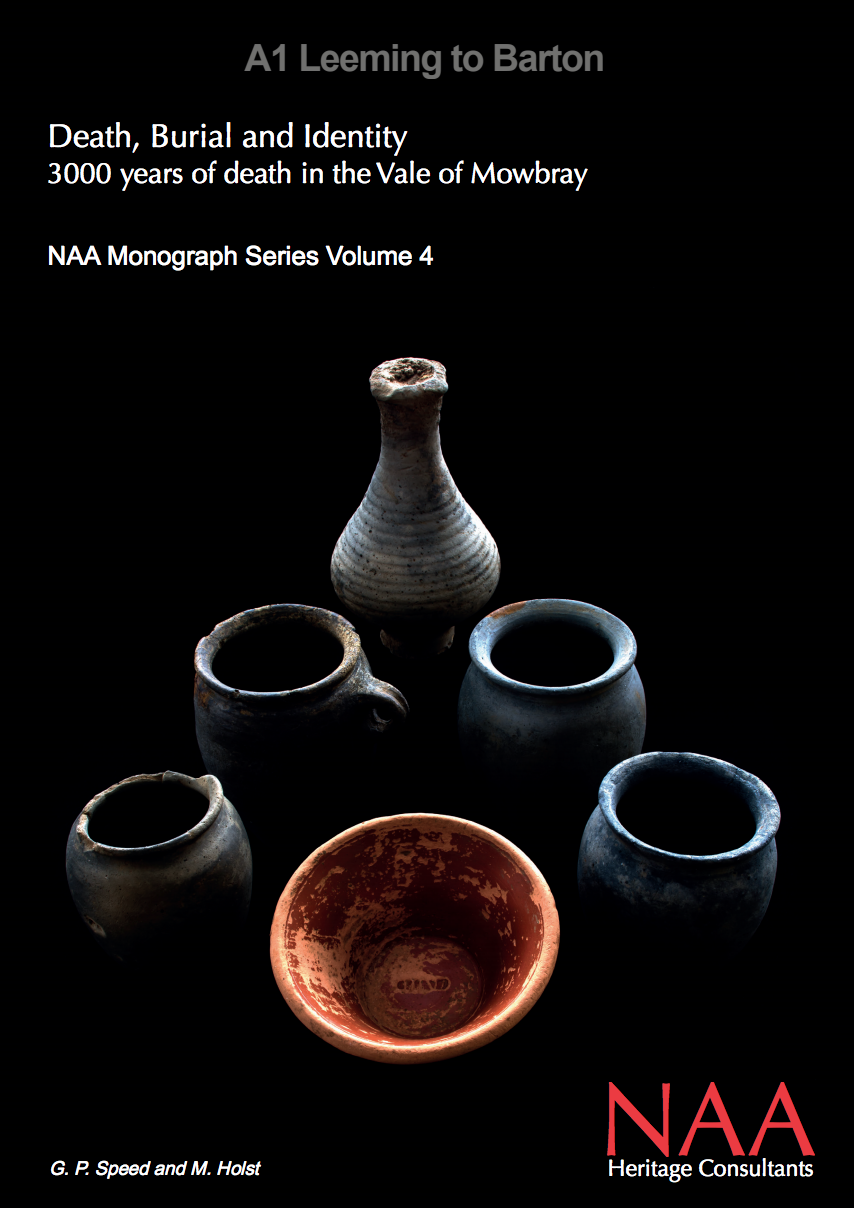Malin Holst Co-Edits New Book on Death, Burial and Identity
Archaeological monograph is available Open Access on the Archaeology Data Service

New publication: Death, Burial and Identity: 3000 Years of Death in the Vale of Mowbray by Greg Speed and Malin Holst has been released by the Archaeology Data Service.
This volume is the first of three monographs that present the results of archaeological excavations between Leeming and Barton in North Yorkshire. The work took place between 2013 and 2017 as part of Highway England’s upgrade of 19km of the A1 to motorway status. This first volume examines the extensive burial record from the road scheme - the excavations revealed 308 human burials at 14 locations, which ranged in date from the Early Bronze Age to the Anglo- Saxon period - and discusses the evidence in relation to what it can tell us about concepts of death, burial and identity and how these changed through time.
The A1 in North Yorkshire broadly follows the line of Dere Street Roman road. It is therefore unsurprising that most of the burials were found at the Roman town of Cataractonium and its nearby satellite roadside settlement at Bainesse, both of which are located close to modern-day Catterick, as well as at a newly identified Roman roadside site at Scurragh House. Prehistoric cremation burials were found at four separate locations, including a Late Bronze Age cremation associated with a circular stone platform and pits containing calcined bone, pottery and other materials, which had subsequently been sealed by a small mound.
At Cataractonium, a number of infant burials and cremations were found inside the settlement area and Late Roman inhumations in back-plot locations at the rear of properties. In addition, a small group of late 2nd-century cremation burials, including a bustum-type, were located in association with the nearby Antonine fort. At Scurragh House, inhumation and cremation burials were excavated in back-plot locations and were associated with small square or trapezoidal arrangements, each of four small stakeholes, that surrounded these graves. However, the largest number of Roman burials - 232 inhumation graves and 17 cremation burials - were from part of a cemetery excavated at Bainesse, which was in use from around the late 1st century until at least the mid-5th century.
The concept of identity formed a major research theme for the project. The Roman burials exhibited a variety of grave furnishing and grave goods, and an extensive radiocarbon dating programme provided scientific dates for 151 of the burials spanning all periods. This evidence, alongside a comprehensive study of the surviving human remains, has been drawn together to provide a systematic analysis of the developments in burial rites through time. Combined with scientific analyses in the form of stable isotope analysis and Bayesian modelling of radiocarbon dates from Bainesse Cemetery, demographics, diet and changes in cemetery use have been explored to build a picture of the people who lived and died at these sites.
The burials presented in this volume, particularly for the Roman period, present one of the largest and best dated assemblages from northern England. The multidisciplinary approach taken has provided a wealth of information on funerary behaviour in the area over a period of over 3000 years. For the Roman and early post-Roman period in particular, the results from the A1 scheme complement other recent work examining variation in funerary tradition across Roman Britain, and as such are of national, if not international significance.
You can download the volume here: https://doi.org/10.5284/1050910